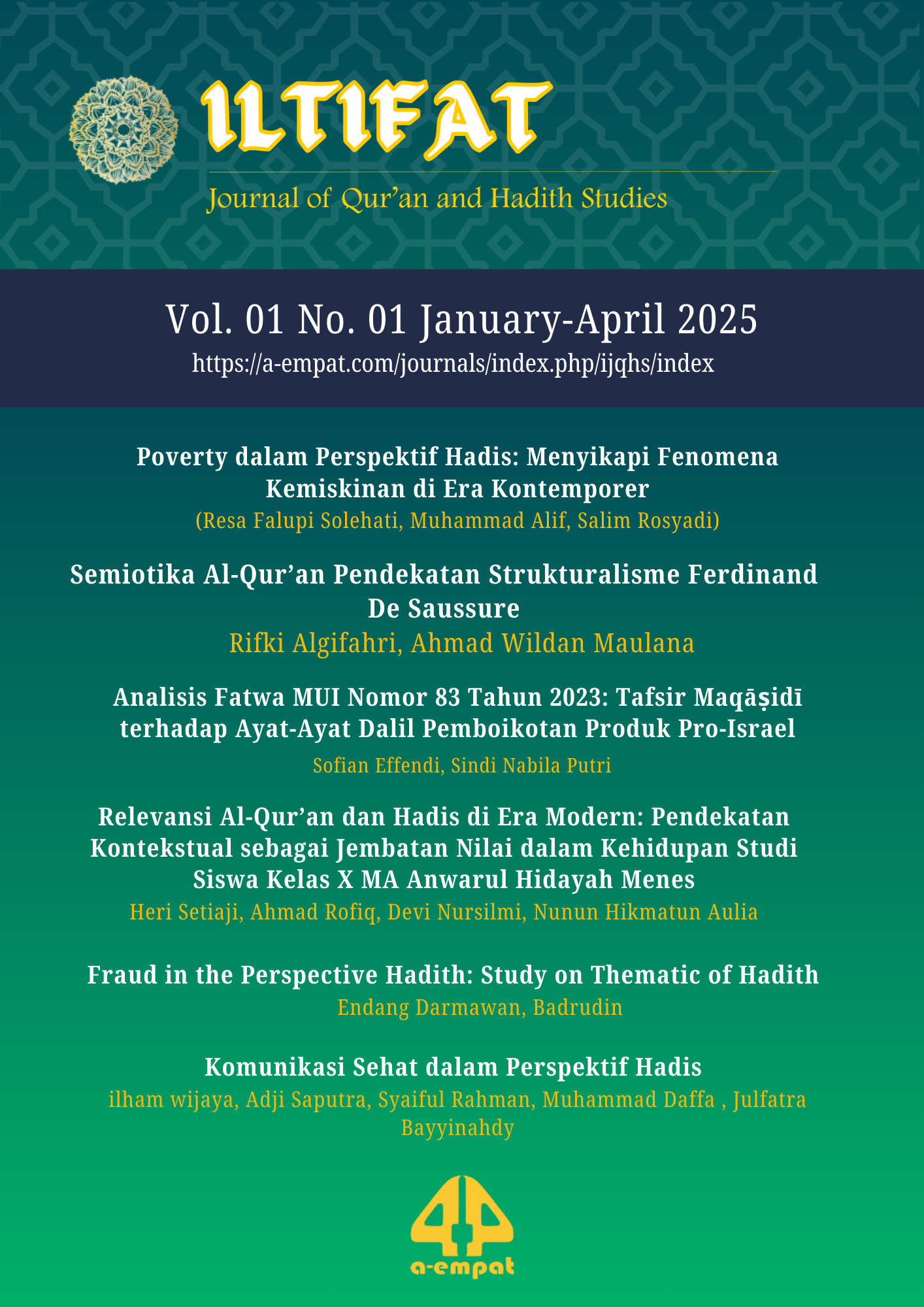Semiotika Al-Qur’an Pendekatan Strukturalisme Ferdinand De Saussure
DOI:
https://doi.org/10.63705/ijqhs.v1i01.7Keywords:
Qur'an, , Semiotics, Ferdinand De Saussure, StructuralismAbstract
This study explores the application of Ferdinand de Saussure's structuralist theory in understanding the semiotics of the Qur'an. The research aims to uncover the Qur'an’s linguistic structures and the relationships between signs (signifier and signified) within its sacred text. By employing Saussure’s principles, such as the arbitrariness of signs and the concept of binary oppositions, this article seeks to decode the deeper meanings and messages embedded in the Qur'an. The research analyzes selected verses to demonstrate how structuralism can help reveal the interconnectedness of linguistic elements and their roles in conveying divine messages. This structuralist approach offers a fresh perspective on Qur'anic studies, emphasizing the importance of language as a system of signs in understanding religious texts. These findings are expected to contribute to a broader discussion of linguistics, semiotics, and present a framework for analyzing the Qur'an beyond traditional interpretation.
Downloads
Downloads
Published
Issue
Section
License
Copyright (c) 2025 Rifki Algifahri, Ahmad Wildan Maulana (Author)

This work is licensed under a Creative Commons Attribution-ShareAlike 4.0 International License.







